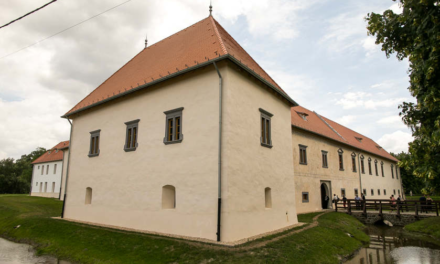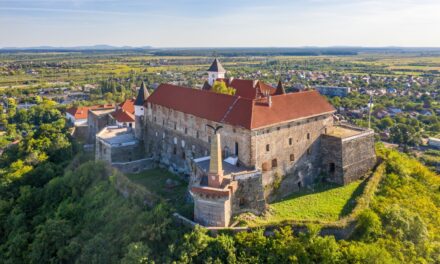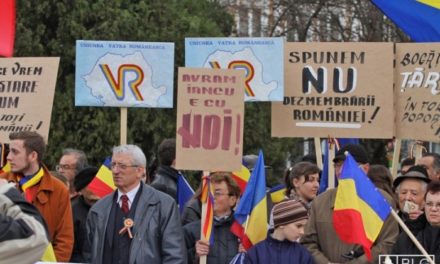In fact, everyone wants their own fairy tale and story to have a happy ending, which is why folk tales from a "pure source" are important to people, says cultural researcher Erika Tekei from Marosvásárhely.
The educational consultant responsible for the publications, oral storytelling and text folklore of the House of Transylvanian Traditions Foundation believes that the folktale actually depicts a world of desire, the wisdom included in the tales helps to live and survive, it conveys the message of how to live, how it should be lived, and the hero of the tale shows that what should we do if anyone or anything threatens the functioning of life, the order of the world.
Throughout the Carpathian Basin, attention is focused on the importance of folk tales on September 30, Hungarian Folk Tale Day, which Hungarians celebrate on the birthday of Benedek Elek, the great storyteller. Nowadays, it is being said more and more often that the healing power, eternal, deep truths and guiding effect of a fairy tale from a "pure source", i.e. a folk tale, are needed not only by the soul of children, but also of adults - perhaps just as it was centuries ago.
We asked Marosvásárhely cultural researcher and editor Erika Tekei, the educational consultant responsible for the publications, oral storytelling, and textual folklore of the Transylvanian Traditions House Foundation, about how to explain the fact that the "power" of the folktale is unchanged, timeless, and still important today to appeal to the human soul.
"The folk tale actually presents a world of desire, the wisdom included in the tales helps to live and survive, conveys the message of how to live, how to live. Of course, when I say this, I am primarily thinking of fairy tales, heroic tales, and magical tales. The hero of the tale shows what we must do if anyone or anything threatens the functioning of life and the order of the world. The hero of the tale is a representative of humanity in a devalued world" -
said Erika Tekei. He explained that the hero usually has to go on a journey and recover something very valuable and important (for example, the kidnapped heavenly bodies, a beloved being, the truth), during his journey he has to endure all kinds of tests, he finds helpers and acquires magical tools, but there will be obstacles and enemies too.
"Many things can happen to him, but it is never the case that by the end of the story the negative initial situation does not change, good triumphs, and evil is not punished. In fact, this is what everyone longs for, to have a good ending to their own fairy tale or story."
- explained the cultural researcher.
There will always be new fairy tale versions
As an ethnographer, Erika Tekei has been researching folktale material for a long time, so we also asked her how she sees it: is the folktale material itself still "alive" somewhere in Transylvania in the present age. In other words, whether folk tales are being created today, whether they are changing, are they being modified in some way to adapt to the times of the past, or should the genre be considered as "closed" material. When someone tells a folktale, they bring it to life, because the occasion, place, time of the storytelling, the personality of the storyteller, the expectations of the storytellers, the current events, the historical context - a lot of things influence it, and thus new and new versions are always created , and are still being created today. I believe that new fairy tales and versions of fairy tales have always been born and will continue to be born," explained Erika Tekei. He added that the folktale collections of the 19th and 20th centuries with its appearance in the 19th century - although these books were intended for adult readers - the folk tale as a written text also became part of institutional, kindergarten and school education and education, and gradually became a children's genre. At the same time, seventy or eighty years ago, storytelling occasions were still for group work - spinning, corn husking, plucking feathers, calabash, cutting wood, burning coal, etc. - or they were also connected to coercion - military service, prisoner of war - adults also told stories to adults.
"After the Second World War, the spread of newspapers, magazines, books, then radio from the 1960s, and television from the 70s pushed storytelling more and more into the background as a social pastime. In the most fortunate cases, family members - parents, grandparents, older brothers and sisters, as well as educational and public cultural institutions and teachers - have been the ones who continue storytelling"
- brushed the researcher.
As he said, since the 2000s, live storytelling has become more and more important, the re-teaching and re-teaching of storytelling is a recent initiative, live story telling events for children and adults are becoming more and more popular.
Instead of ready-made images, a "telling eye"
Even today there are storytellers - for example, Anna Hideg, who lives in Ördöngösfüzes in Cluj County, is a master of folk art, who also tells stories in front of an audience, but others also tell stories in a similar way. By the way, Anna Hideg is also considered "one of the last owners of folk treasures".
This is how aunt Anna Hideg, almost ninety, sang at Kőfest (video)
We also asked Erika Tekei how she sees how the stories told and shared in person have a different effect on the recipient - be it a child or an adult - than if they are read aloud from a written text or come to the recipient in the form of an animation. Personal presence, being together, the uniqueness and unrepeatability of the here and now is the magic of live storytelling. In this case, the storytellers are not only consumers of the stories, but also weave, create and shape the story together with the storyteller. They don't receive pictures ready-made either, everyone sees the fairy-tale pictures painted with words in their own way with their own fairy-tale eyes," explained the researcher. He added that Anna Hideg, a storyteller from Ördöngösfüzes, was born in 1936, she and her contemporaries still heard and learned stories in the traditional way, on winter evenings in the spinning wheel or when plucking feathers, nowadays most people learn to tell stories again based on written texts, they are happy to take out old folktale collections again.
Boys turned into birds, the "beautiful order" is restored
We asked Erika Tekei to name her favorite folktale and also tell us why she chooses it.
"Each and every story appeals to me, I love it very much, I read it several times, I like to tell it. When it is my favorite folktale, it changes. If I can say just one thing, I would choose the type of fairy tale called the girl looking for her brothers, the girl who turns into a bird to save her brothers, the sacrifice made at the cost of suffering, this is the tale of perseverance and faith for me"
answered the researcher. As he said: according to the plot of the tale, the mother gets angry with her sons and curses them. The curse is fulfilled, the boys turn into birds (ravens, cranes, swans, crows, wild geese) and fly away. Their sister later learns that she once had brothers, what happened to them, and goes in search of them. On the way, he reaches the Sun, the Moon and the Wind, and asks about his brothers. They set him on his way, he finds his brothers, and from them he learns the way of their salvation: he cannot speak for seven years, while he has to sew shirts for his brothers from nettles.
A prince finds the strange girl, falls in love with her and marries her. The now queen gives birth to a child, but her mother-in-law or evil banya steals the child, in some versions of the tale, replaces it with animal cubs, and the mother is accused of murder or animal birth. He is sentenced to death, he cannot prove his innocence because of his vow, he cannot speak. In the meantime, the seven years expire, the girl's brothers appear at the place of destruction, they turn into humans, the curse is lifted, they save their sister, the royal child is found, and the evil gets his punishment.
"After my favorite fairy tale, I would also like to share a favorite quote with the readers, the thoughts of one of my favorite fairy tale collectors, Olga Nagy: To bring a fairy tale to life, the archaic, naive worldview that is not ashamed of miracles, even believes in them, was necessary. He also believes in superhuman beings, fairies, dragons, and giants; and especially in the fact that there was once a healthy and beautiful Order in which the truth still prevailed. This perception emerged from the internal compulsion that we cannot live without consolation, we must believe in miracles! In that good can win and evil gets its punishment. This is actually a kind of mythical basic position, which also forms the basis of religion"
- quoted the researcher Olga Nagy (1921 -2006) Transylvanian ethnographer and ethnologist.
Featured image: Cultural researcher Erika Tekei told children on the occasion of Hungarian Folktale Day at the end of September in the children's library in Marosvásárhely, the Transylvanian Traditions House Foundation joined the event • Photo: Maros County Children's Library












